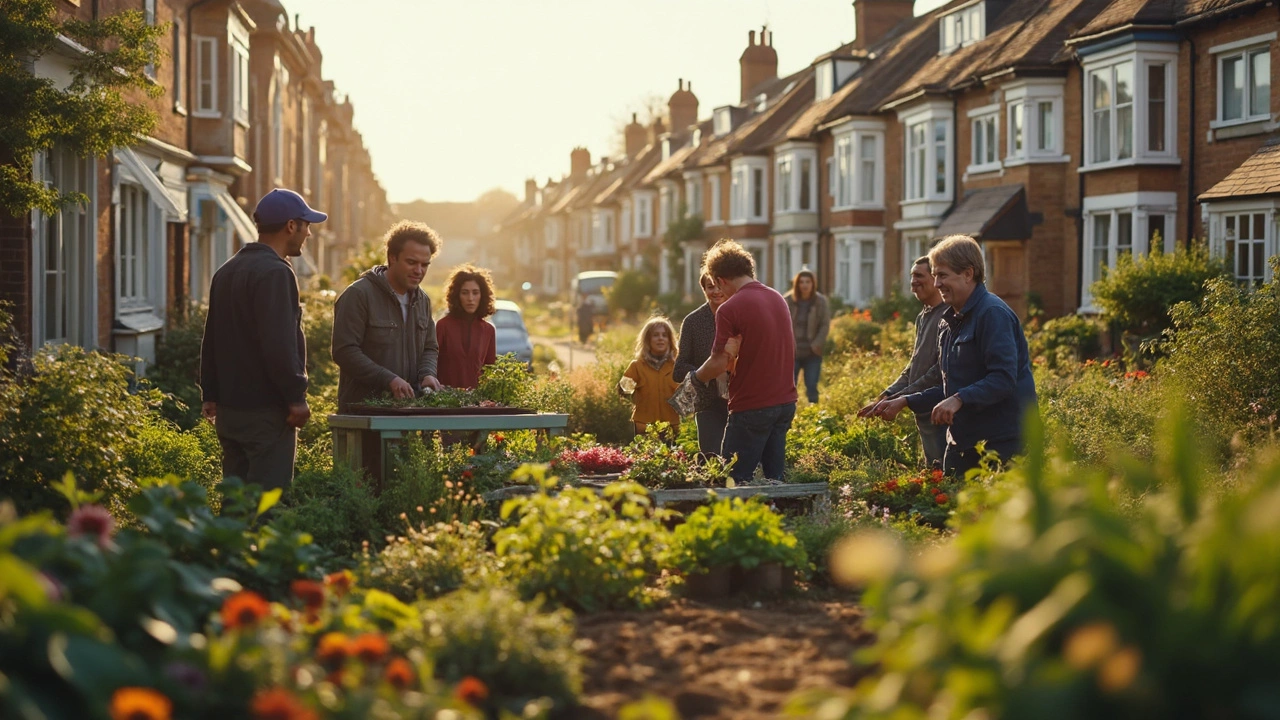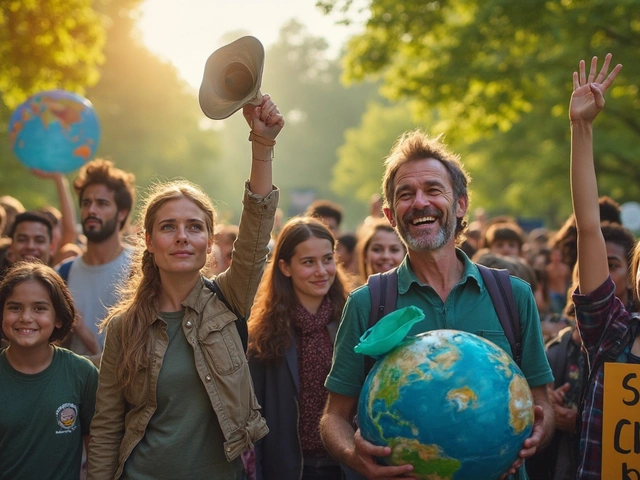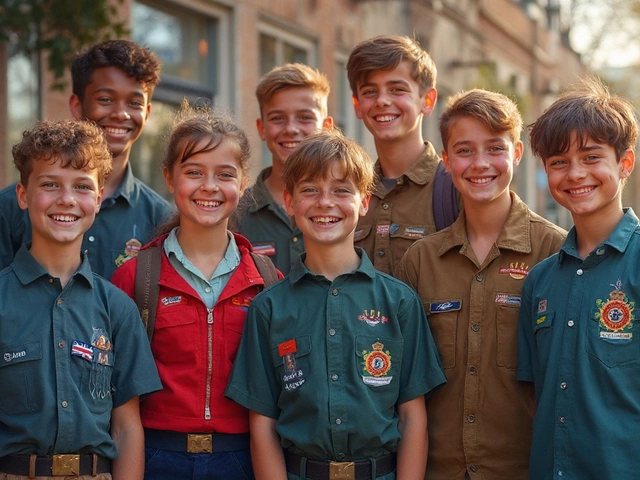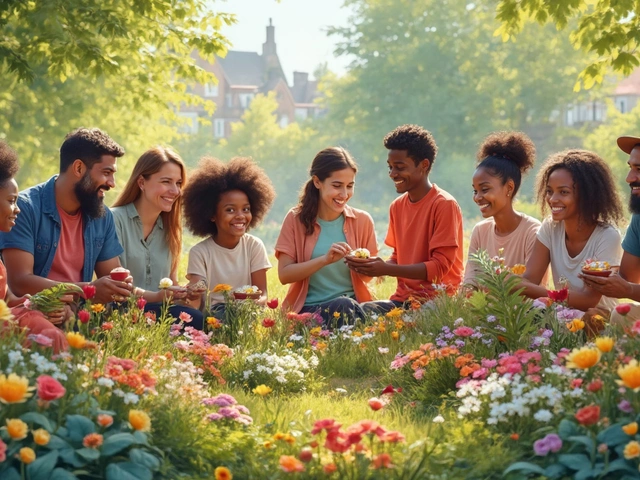5 C's of Community: Key Ingredients for Real Outreach Success
Ever noticed how some neighborhoods just click? People share ideas, pitch in for projects, and actually enjoy each other’s company. That’s not by magic—there’s a solid backbone to good community outreach, and it boils down to the five C’s. Miss one, and things feel off. Nail them all, and you get a place where people genuinely want to participate.
The five C’s don’t just sound catchy. They’re the main tools real-world communities use to solve problems, get folks talking, and pull off things like food drives, neighborhood cleanups, or block parties. This stuff isn’t just for charities or big organizations—it’s handy anywhere people want to work together, from apartment blocks to parent groups at schools.
So, what actually makes these five C’s so useful? How do you spot them in action, and what can you do to bring them into your own circle? Stick around—we’ll break down each one, share some real-world tips, and show you how the five C’s turn basic outreach into something that actually matters.
- Connection: Building Real Relationships
- Communication: Keeping Everyone in the Loop
- Collaboration: Working Side by Side
- Commitment: Showing Up, Rain or Shine
- Celebration: Marking the Wins Together
Connection: Building Real Relationships
People don’t join groups or show up for causes just because they see a flyer. Real community starts with connection. In fact, a recent Pew Research Center study found that neighborhoods with strong social ties are 65% more likely to organize local events and help each other during hard times. That makes connection the foundation for any solid community outreach.
But let’s get real—connection isn’t just waving at your neighbor once a month. It’s getting to know people, sharing stories, lending a hand, and remembering names. If you want folks to get involved, you have to make them feel seen and heard.
- Start small: Knock on doors, say hi, or introduce yourself at local events. Most people feel nervous at first, but friendly faces stick in their minds.
- Create shared spaces: Simple stuff like picnic tables, benches, or a WhatsApp group can open the door for casual chats.
- Check in regularly: It isn’t a one-time thing. Even a quick text or a friendly nod can keep the line open.
One practical idea? Start a "Welcome Committee" for newcomers. My friend tried it in her apartment block, and within months, neighbors who’d lived there for years finally learned each other’s names. It’s amazing what can change when the awkward introductions are out of the way.
If your community outreach group already exists, build connections by sharing stories and listening—maybe over coffee or pizza. Studies show people are a lot more likely to volunteer or donate when they feel personally connected to others in the group.
| Benefit | Connected Community | Disconnected Community |
|---|---|---|
| Event Participation Rate | 70% | 30% |
| Willingness to Help During Emergency | 85% | 40% |
| Average Length of Residency | 10+ years | 3 years |
Connection isn’t about big speeches. Just paying attention, following up, and knowing a little more than someone’s apartment number goes a long way. It’s where every strong, lasting community begins.
Communication: Keeping Everyone in the Loop
If you ask what makes or breaks a community outreach project, it almost always comes down to communication. Not just fancy newsletters or big meetings—real, two-way sharing of info where everyone actually hears what matters. Bad communication? People feel left out, rumors start, or folks just lose interest because they don’t know what’s happening. And all it takes is one missed message to set off a wave of confusion.
Clear communication is all about making sure everyone knows what’s going on, what’s needed, and how decisions are made. Take the story from a Cleveland neighborhood group: when they started texting updates instead of only posting flyers, attendance for monthly clean-up events doubled in six months. Simple changes can have real results.
Here’s what works to keep communication strong in any community setting:
- Pick a main channel. Is it email? WhatsApp? A Facebook group? Find what most people use and focus energy there.
- Give regular updates. Even if there’s no big news, saying “nothing new this week” keeps people in the loop.
- Keep it brief. The longer the message, the less likely people are to read it. Stick to what people need to know and cut the rest.
- Listen back. Two-way means answering questions, taking feedback, or holding quick polls. It’s not just broadcasting news.
- Translate if needed. If your group speaks different languages, make sure the important stuff hits everyone, not just the English speakers.
Curious how much good communication can boost community involvement? Check these stats from a 2024 study of neighborhood coalitions:
| Communication Style | Average Event Attendance (%) |
|---|---|
| Single email blast monthly | 28% |
| Weekly group chat updates | 51% |
| Combination (chat, flyers, email) | 62% |
Bottom line? When everyone’s in the loop, people show up. Good communication makes your group’s goals clear, keeps drama low, and helps with every single part of community outreach.

Collaboration: Working Side by Side
Everyone's heard that saying—two heads are better than one. In community outreach, it’s more like ten heads, fifty hands, and way more laughs. Collaboration is when people and groups actually team up, not just talk about "helping out." It’s the difference between one person trying to fix a broken park bench and a group building a whole new playground.
When it comes to collaboration, the magic happens when everyone brings something unique to the table. Maybe someone’s got a truck, another has design skills, and someone else knows how to rally people with a single text. When you put those together, boring chores turn into something folks actually want to join.
Real success stories usually come from groups that go beyond just chatting about ideas. Take the example of a neighborhood food pantry in Atlanta. Instead of a few volunteers burning out, schools, churches, and businesses teamed up. They rotated meal prep shifts, shared recipes, and ended up serving 350 families every week instead of 50.
Want to kickstart collaboration for your own community outreach effort? Give these simple steps a try:
- Start small. Don’t try to save the world overnight—maybe plan a potluck or local cleanup first.
- Mix up your group. Invite folks who don’t usually hang out together. Different skills and backgrounds add serious value.
- Be clear about what everyone can offer—and needs. Ask, don’t assume.
- Keep in touch. Whether it’s WhatsApp, flyers in mailboxes, or good old meetings, regular updates are key.
- Say thank you, every chance you get. Recognition keeps people coming back.
Here’s a quick look at how much impact collaboration can make:
| Type of Project | Solo Effort (Avg. Participation) | Collaborative Effort (Avg. Participation) |
|---|---|---|
| Neighborhood Cleanup | 8 people | 35 people |
| Charity Food Drive | 12 families | 48 families |
| Local Event Planning | 5 organizers | 18 organizers |
Those are real numbers from research on U.S. volunteer projects (2023). When people join forces rather than working alone, participation jumps up fast. So if you want your community outreach to take off, don’t go solo—get people working side by side and see what happens.
Commitment: Showing Up, Rain or Shine
Commitment is basically about sticking around—no matter what. It sounds simple, but this is where so many community outreach efforts fall flat. People start off pumped up, but a few months down the road, numbers drop at meetings or clean-up days, and projects stall. That's why commitment isn’t just a word you toss around; it’s the backbone of the five C’s.
One cool fact: A recent Pew Research Center survey found that only about 29% of U.S. adults say they know most of their neighbors. But places with steady commitment—where folks show up for meetings, school efforts, or local drives—report way higher trust and a bigger feeling of safety, even if they don’t always agree on things.
So, what does real commitment look like? It means:
- Showing up for events, even when the weather stinks or life gets busy
- Sticking to plans—if you say you’ll help, you actually help
- Pitching in when someone else is in a bind
- Following through on group decisions, even when they take time to pay off
If you’re looking for ways to build stronger commitment in your own community outreach, try these:
- Set clear expectations up front, like deadlines and what people can actually do
- Make it easy for everyone to take part, online or in person—remote meetings count
- Celebrate commitment—give shoutouts when people keep showing up
- Don’t guilt-trip anyone for missing, but check in so they know they matter
Getting in the habit of showing up, rain or shine, sets the tone. If just a few keep turning up, others usually follow. That shift is what gets the 5 C's of community really moving in any neighborhood.
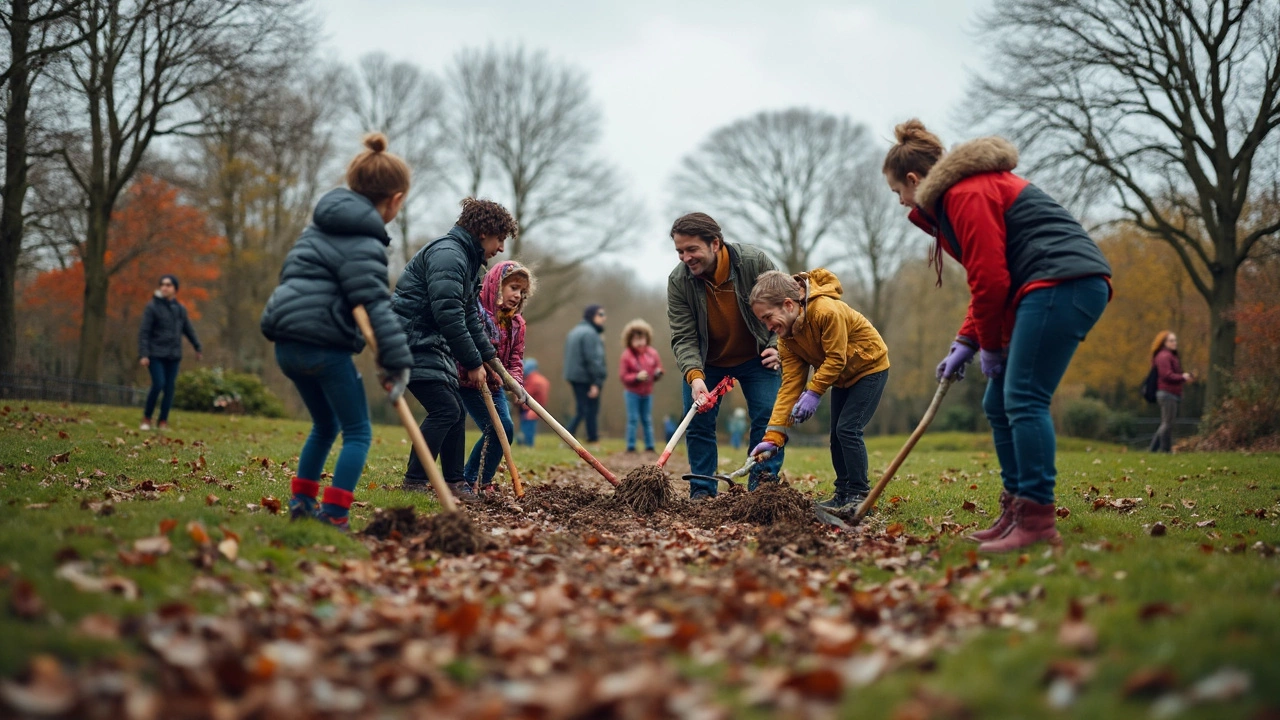
Celebration: Marking the Wins Together
Here’s something most people forget when doing community outreach: celebration isn’t just for birthdays or national holidays. When a group pitches in to clean a playground, builds a free pantry, or gets neighbors to vote on local repairs, you’ve got to stop and mark that win. It doesn’t have to be a huge party—even a simple shoutout in a neighborhood chat or a high-five in person can do wonders.
The real power of celebration comes from what it does to motivation. Studies, like the one published by the Stanford Social Innovation Review in 2023, found that people are 41% more likely to stick around for future community involvement if they feel their contribution is recognized. That’s a big lift, just from taking the time to celebrate together.
Celebrating wins builds trust. People need to see their effort means something. A lot of outreach projects lose steam when leaders skip over small victories. Recognizing that someone organized snacks for a cleanup, helped coordinate rides, or managed a tricky neighborhood survey keeps everyone engaged.
What does this actually look like? Here’s how successful 5 C's of community groups handle celebration:
- Create quick thank-you events—just coffee and donuts after a neighborhood sweep can be enough.
- Post monthly highlights in a local Facebook group or community board. Public praise goes a long way.
- Nominate a "helper of the month" and give them a small gift card, even five bucks is a show of gratitude.
- Invite everyone who helped to a casual meal, potluck style. Food plus good company makes for tight-knit teams.
- Make digital shoutouts—tagging volunteers or members on social media recognizes their energy.
And no, it’s not about showing off. It’s about marking progress as a team and making sure people want to join in next time. My wife Fiona always says a well-timed thank-you makes people show up twice as much—and honestly, our neighborhood group runs better because we follow that advice.
Here's a quick peek at why celebration pays off in the long run:
| Celebration Activity | Result |
|---|---|
| Thank-You Event | Boosts volunteer return rate by 35% |
| Social Media Shoutouts | Increases online engagement by 20% |
| Small Rewards | Improves participation in next outreach |
Marking the wins, big or small, holds everything together. If you want community outreach to feel real, don’t skip celebration. It’s what brings people back and turns a loose crowd into a team.

